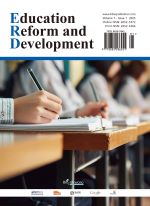An Empirical Study on the Human Resource Development of “She” Women in Guangzhou from the Perspective of Language Development
Abstract
Women are an important force in building a well-off society in an comprehensive way in rural areas, and also the main force in building a new socialist countryside. At present, the development of minority women’s human resources tends to ignore the value of their language and pay more attention to the economic value brought by their labor force. Women in “She” ethnic villages in Guangzhou generally have the ability of flexible code-switching in four languages, namely “She,” Cantonese, Hakka and Mandarin. Based on the field investigation and from the perspective of language resources development and utilization, this paper aims to help the development of human resources of “She” ethnic women in Guangzhou from the aspects of family language education, practical skills training, language information and tourism resource integration, and further promote the economic development of “She” ethnic villages.
References
He P, 2024, Practical Ideas of Rural Industry Revitalization in the Era of “Internet +”. Journal of Shandong University of Agricultural Engineering, 41(9): 41.
Wu K, 2023, Population Loss in County: Current Situation Analysis and Key Points of Governance. National Governance, 2023(5): 61–66.
Zhao L, 2014, Research on Rural Female Population Characteristics and Human Resource Development. Ningxia Social Sciences, 2014(2): 64–67.
Song Y, 2011, Analysis of the Factors Influencing the Formation of Gender Roles. Journal of Huainan Vocational and Technical College, 2011(11): 84–87.
Wang J, 2013, Discussion on Human Resources Development of Rural Women in Poor Areas in China. Hunan Social Sciences, 2013(6): 101–104.
Ding J, 2023, Study on the Mechanism of Influence of Husbands’ Going Out on the Health of Left-Behind Wives: Based on the Perspective of Women’s Social Role and Family Role. China Economic Issues, 2023(6): 130–144.
Liu G, 2022, The Heterogeneity of Child Care on Wage and Income of Married Working Women: An Empirical Analysis Based on Chinese Family Tracking Survey. China Economic Issues, 2022(3): 130–145.
Dong J, 2008, Research on Human Resource Development of Women in Poor Minority Areas, thesis, Southwest University.
Li L, 2018, Construction of Human Resources Development System for Ethnic Minority Women in Western Minority Areas. Labor Security World, 2018(15): 2–3.
Sun H, 2006, The Practice of National Standard Spoken and Written Language Education Policy in Qinghai Province: Course, Experience and Motivation. Journal of Guangxi University for Nationalities (Philosophy and Social Sciences Edition), 2006(5): 6–10.
Zhu S, 2023, The Practice of National Standard Spoken and Written Language Education Policy in Qinghai Province: History, Experience and Motivation. Journal of Qinghai University for Nationalities (Social Sciences Edition), 49(3): 118–123.
Ge X, 2016, Research on Problems and Countermeasures of Human Resources Development of Rural Women in Guangxi. Market Forum, 2016(4): 6–8.
Zeng C, 2024, Characteristics, Problems and Countermeasures of Early Language Education in Urban Families. Journal of Jiangxi Science and Technology Normal University, 2024(3): 104–109.
Fang Q, 2020, Cultural Self-Consciousness and the Return of “Self-Construction”: A Historical Anthropological Investigation Based on the Cultural Changes of “She” Nationality. Journal of Southwest University for Nationalities (Humanities and Social Sciences Edition), 2020(10): 58–63.
Wang J, 2013, Discussion on Human Resources Development of Rural Women in Poor Areas in China. Hunan Social Sciences, 2013(6): 101–104.

